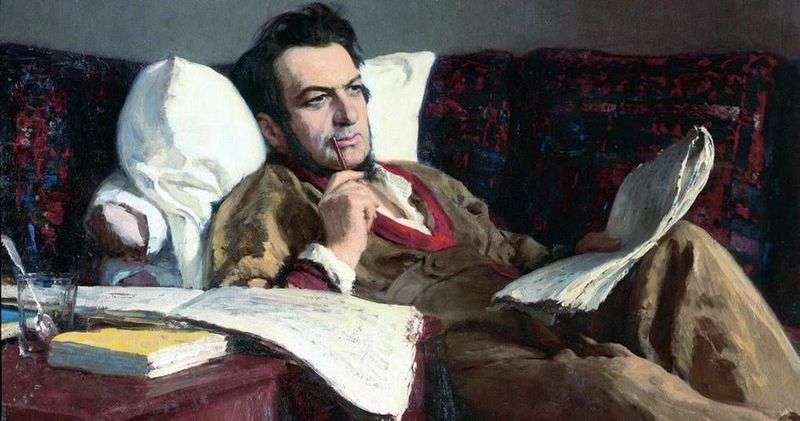
Ilya Repin was very fond of music and created images of many famous musicians. Repin wrote his friend, the famous composer and conductor A. G. Rubinstein, several times.
Anton G. Rubenstein – an outstanding musical figure, the founder of the Russian Musical Society and the first Russian Conservatory in St. Petersburg, he was its director and professor. Rubenstein had a significant composer talent, manifested in a variety of genres. Anton Grigorievich is recognized as the greatest pianist who marked the beginning of world fame for Russian pianistic art.
In the two early paintings, the composer is depicted by Repin behind a conductor’s console on a neutral background, to the waist.
The last portrait of the author wrote after the death of A. G. Rubinstein. This new composition was distinguished by grandness, solemnity, monumentality. The figure of the conductor is shown in full growth against the background of the main Petersburg concert hall with columns, filled with spectators.
The picture is of interest as the later works of the master, who actively uses the achievements of modern painting in his work. Repin in impressionistic colors brightens, softens the contours, conveys the glow of the air. The effect of the grandness is enhanced by the low point of view and the emphasized solemnity of the golden-red color.
1914 was the anniversary for Repin, the artist turned 70 years old. It was at that time that the merchant family of the Shikhobalovs from Samara met him and agreed to acquire two central paintings of the year. These works were “The Belgian King Albert” and “Portrait of a conductor and composer A. G. Rubenstein”. Repin completed them in 1915.
Pictures of several years decorated the halls of the Shikhobalovs’ mansion in Samara. In April 1918, the entire collection, together with Repin’s paintings, was transferred to the Samara City Museum. Now they are the basis of the permanent exhibition of the Samara Art Museum.

